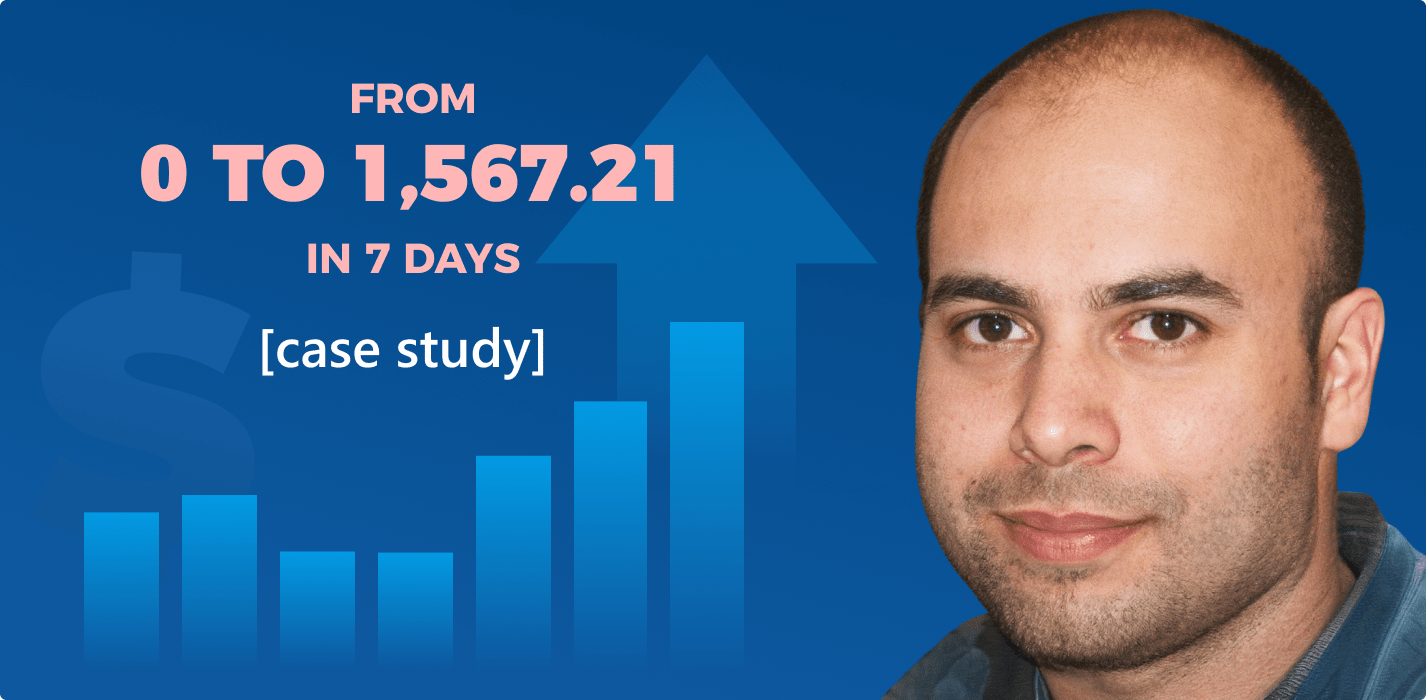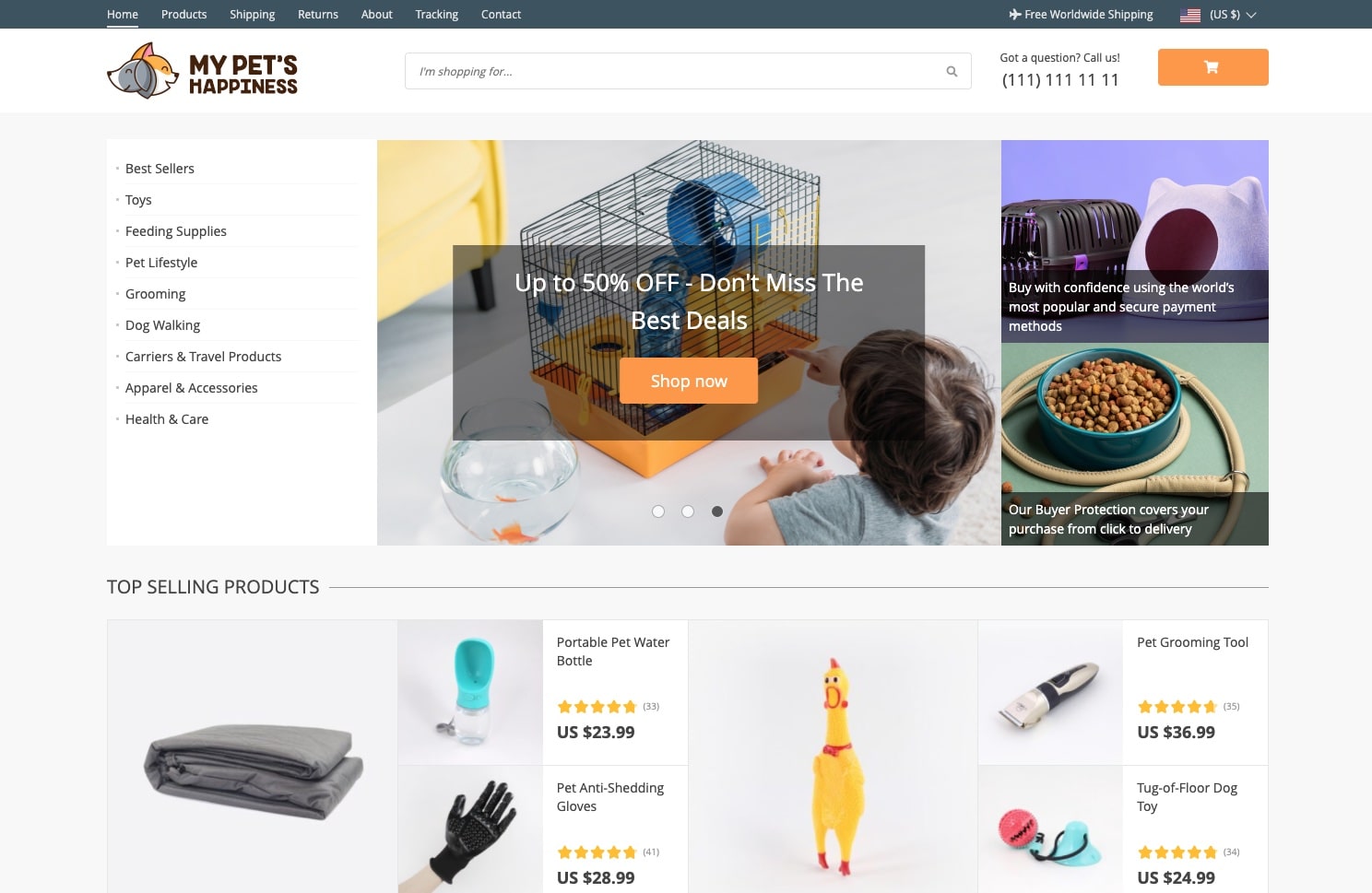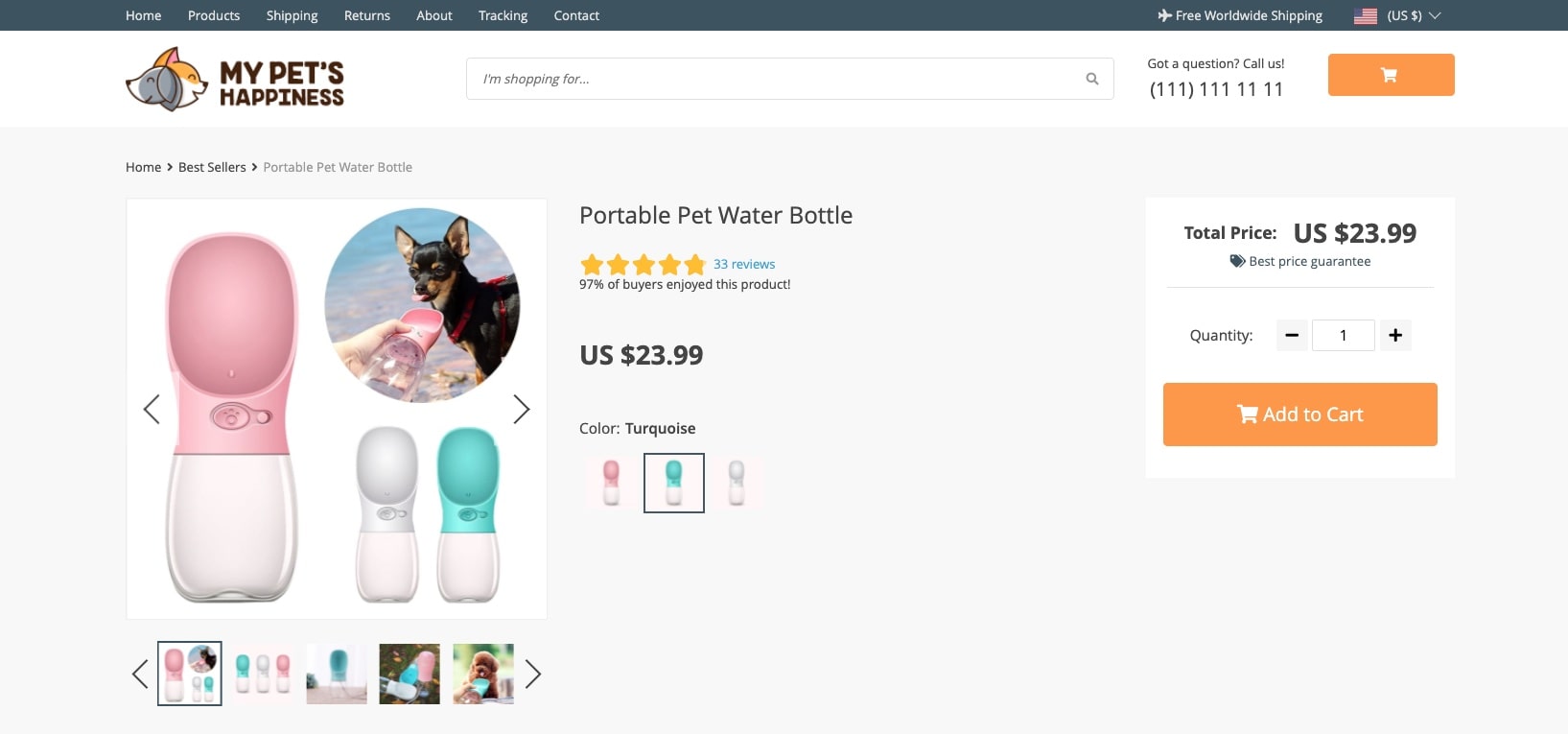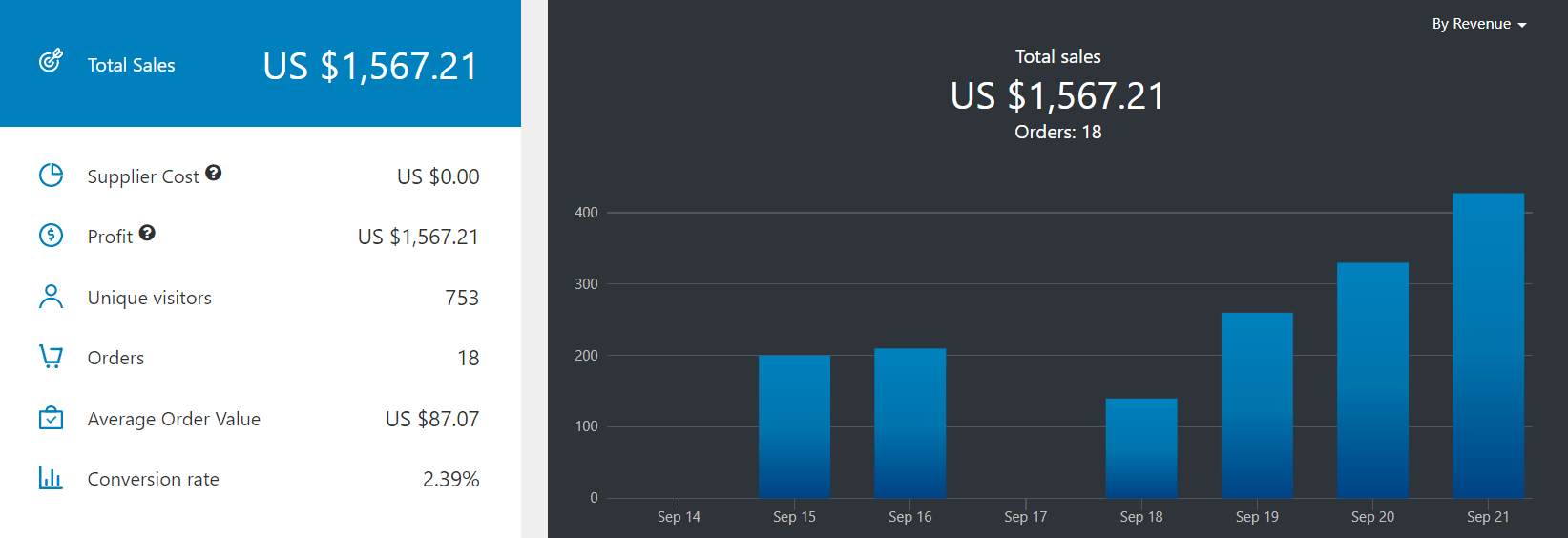If we were invited to ‘Who wants to be a millionaire’, a question on how to grow an ecommerce business would definitely have a ‘Fail first, learn next’ answer. Today we suggest reviewing a specific example to find out the right one.
We often tell you about our clients who grew an ecommerce business with us and succeeded. Actually, there are lots of such cases we learn about. The only differences are growth rate and person’s background, meaning the way they got to ecommerce.
Our today’s hero is Anthony. A while back, he got to a kind of a tough spot pushing him to turn to ecommerce. At the moment, Anthony is an owner of a fast-paced ecommerce business that has long since paid off and become his stable source of high income.
Let’s just cut to the chain of events that pushed Anthony to the point he is at now. It’s highly likely there are people caught in the same circumstances. We hope you will feel inspired to repeat the success of Anthony or even surpass it!
How to grow an ecommerce business and enjoy its revenues
People say when life goes well, you could only make things worse. In fact, if you look around, it may seem most people all over the world follow this rule. Day after day, they go to work that is not enjoyable and doesn’t generate enough money.
And, it takes them years to wait for an event, a sign making them take a good hard look at their lifestyle and give up the illusion of success. This is the same scenario Anthony, our today’s hero is running. A few years ago, Anthony was a regular hired hand working in a local company selling pet products.
He opened his own brick-and-mortar store with pet products. He told us there were big plans for this store. Based on his experience of working in a pet products company, he knew exactly it was the store product range that was crucial. This was a reason he started to increase the number of products in his store lightning-fast, you know.
But here’s a catch: pet products include not only accessories, toys, cages, etc. Actually, these are feeds, litters, and such consumables that account for a significant share of sales. And these are the products with expiry dates.
But sales weren’t growing. The products he had spent large sums of money on began to sour. He had to sell them for next to nothing. The result is the following – all growth went belly up, Anthony got into debts with all the consequences.
You may say Anthony was driving too fast. And you may be right, but partly. If we speak about business, the need for rapid growth is a strength rather than a weakness. In case he entered ecommerce, his idea would finally pay him off.
Step #1: shift from an offline business to ecommerce
Anthony faced the conceptual issue of an offline business. In practice, when you run an offline business, you’re likely to face a situation when all the items you’ve bought back and kept in stock can lose their value. This is the reason why Anthony has come to the right conclusion and decided to turn to ecommerce.
If you run an ecommerce business, there’s no need to buy products in advance. That means you don’t need to monitor products’ expiry dates and take any risks. All you need to do is to transfer the orders of your customers to your suppliers. And, actually, that’s it.
So these are the suppliers you deal with who take risks and look after all these issues. Plus, the online business model frees you from additional expenses: keeping items in stock, hiring staff, paying rent, etc.
Step #2: building an ecommerce store
First of all, if you want to enter ecommerce, you need to take care of the technical setup: it’s all about building a store. Inspired by the success stories of our previous clients, Anthony ordered a ready-to-go custom store from Sellvia.
At the moment, this is the most favorable solution to grow an ecommerce business. It doesn’t require any skills or experience at all. Sellvia project managers will build a store according to your preferences and wishes.
In due course, Anthony got his ready-to-go store.
Step #3: think about your business strategy through carefully
Ask any entrepreneur, and they tell you that, basically, a business strategy is a relative term. It can be linked to a wide range of business processes. As a rule, if we speak about running an online store, a business strategy affects the following aspects:
- Product range and diversity
- Pricing approach
- Promotion
Actually, there’re definitely more of them. However, these are the main ones your business strategy is based on.
That’s why, right after Anthony got his custom dropshipping store that was ready to sell from day one, he started to consider its product range.
Step #4: define your product range
What are the things to keep in mind here?
-
Bigger product range = higher revenues
As you probably guessed, the situation behind the store of Anthony is not as trite. Don’t forget that the product selection issue is something very special to him.
You may ask whether Anthony drew conclusions from his previous failure? Probably, he should have reviewed his strategy. In fact, he shouldn’t. His business strategy looks reasonable. These were the features of offline businesses that became a stumbling block to his future progress. But we speak about ecommerce. There are totally different rules in force. Got to say, they are a lot more flexible.
Ecommerce lets you escape a number of aspects that are crucial for offline businesses.
First of all, an online business owner doesn’t have to keep items in stock, a product range itself is only product pages on their websites. So you are able to add an unlimited number of items to their stores.
Here we need to take a step back. You know well what ecommerce is, and how to run online stores. There’s no secret for you that each store has its own flagship products. You focus all your marketing efforts on them, meanwhile, they bring you the bulk of income. There are just a couple of them. All the other products are for cross sale. Customers buy them in addition to the flagship ones.
And that’s why Anthony is so excited about having lots of products to experiment with! Wanting to convert as many website visitors into customers as possible, he aims at letting any Internet user find something they need in his store. This is why he started to search for unique products for his business and used Sellvia’s Premium Products to bring his product count to 500+.
Step #5: set up pricing
Don’t forget about pricing. The point is that if you work with Sellvia, you won’t have any difficulties with that. Anthony decided to rely on the basic pricing configuration the team of Sellvia had proven to be profitable.
Step #6: start promotion
The promotion has a direct impact on how much money your store will generate. Each way of promotion has its advantages and deserves attention. Right now, the best option that is now available in ecommerce is launching ad campaigns on Facebook.
But Anthony faced Facebook ads for the first time because he had experience in offline marketing only. To launch ad campaigns on Facebook you need ad texts and media files. Through trial and error, you will find the right way to deal with that. However, testing different ad creatives takes your time and, most importantly, money. However, this is not a problem anymore!
Sellvia has spent thousands of dollars to test ad creatives for its products. That’s why the Sellvia database now contains time-tested marketing materials for the most important social networks and even for starting email campaigns.
Anthony decided to use the option given, and it paid off.
Most of the traffic the store received was due to Facebook ads and social media activities. Although Anthony didn’t pay particular attention to the SEO aspect, organic search also provided some cash. Marketing materials Sellvia provides its clients with have proven to be effective by collecting sales leads from day one.
Step #7: succeed and repeat
We have passed through the key stages of growing an ecommerce business that brings profit. In a nutshell, you get a ready-to-go store, fill it with products, customize whatever you wish, start the promotion, and collect money.
As a result, such a business takes you a little of your time to process orders and monitor ad campaigns. As for Anthony, he says that he spends 2-3 hours a day to run and boost his business.
3 months have passed since Anthony decided to order a custom ecommerce store by Sellvia. He put his business on track. And now its stats are going up.
At the moment, the store steadily makes $1,5K+ a week.
That’s why the store has already paid off and even started bringing profit.
So this is how the same business strategy failed completely in offline business, but shows remarkable results in ecommerce. The idea of having a huge product range in a store is quite reasonable, but it suits online businesses better. And Anthony has already proved it. But there’s more.
Anthony believes that the most important thing after such a leap forward is to go beyond. Although the product range of his store is quite big, nothing stops him from adding more items to his website. But Anthony had another idea.
He has already informed us about the decision to grow one more ecommerce business. He guesses a new niche with new products and a new target audience will break new ground and let him make even more money.
Taking stock: how to grow an ecommerce business
Are you interested in what niche has Anthony decided to invade this time? Actually, he hasn’t decided yet. Fortunately, you’ll find products from a number of niches in the Sellvia catalog. Or at all, it’s a great idea to start a general store that can include even more products, and, subsequently, claim a higher income.
In fact, it’s up to you to decide the way you’re going to develop your business and the time you’re going to spend on it. Nothing stops you from increasing the product range of your only store and step up advertising.
This strategy let us achieve a $500K+/month point with some of our own stores.
Or feel free to follow the example of Anthony and grow new ecommerce businesses and invade new niches. Most importantly, you need to start. Now you know the scheme on how to grow an ecommerce business quickly and easily. Anthony has already proved the effectiveness of this approach, and now he is ready to move on. So this is high time for you as well to start your own ecommerce business, isn’t it?








